
A burning glass or burning lens is a large convex lens that can concentrate the sun's rays onto a small area, heating up the area and thus resulting in ignition of the exposed surface. Burning mirrors achieve a similar effect by using reflecting surfaces to focus the light. They were used in 18th-century chemical studies for burning materials in closed glass vessels where the products of combustion could be trapped for analysis. The burning glass was a useful contrivance in the days before electrical ignition was easily achieved.

Solar energy is radiant light and heat from the Sun that is harnessed using a range of technologies such as solar power to generate electricity, solar thermal energy, and solar architecture. It is an essential source of renewable energy, and its technologies are broadly characterized as either passive solar or active solar depending on how they capture and distribute solar energy or convert it into solar power. Active solar techniques include the use of photovoltaic systems, concentrated solar power, and solar water heating to harness the energy. Passive solar techniques include orienting a building to the Sun, selecting materials with favorable thermal mass or light-dispersing properties, and designing spaces that naturally circulate air.
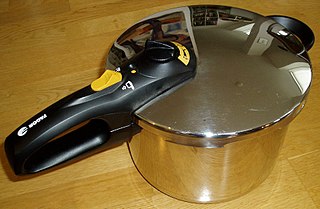
Pressure cooking is the process of cooking food under high pressure steam and water or a water-based cooking liquid, in a sealed vessel known as a pressure cooker. High pressure limits boiling and creates higher cooking temperatures which cook food far more quickly.

A solar furnace is a structure that uses concentrated solar power to produce high temperatures, usually for industry. Parabolic mirrors or heliostats concentrate light (Insolation) onto a focal point. The temperature at the focal point may reach 3,500 °C (6,330 °F), and this heat can be used to generate electricity, melt steel, make hydrogen fuel or nanomaterials.

A parabolicreflector is a reflective surface used to collect or project energy such as light, sound, or radio waves. Its shape is part of a circular paraboloid, that is, the surface generated by a parabola revolving around its axis. The parabolic reflector transforms an incoming plane wave travelling along the axis into a spherical wave converging toward the focus. Conversely, a spherical wave generated by a point source placed in the focus is reflected into a plane wave propagating as a collimated beam along the axis.

Yerkes Observatory is an astronomical observatory located in Williams Bay, Wisconsin, United States. The observatory was operated by the University of Chicago Department of Astronomy and Astrophysics from its founding in 1897 to 2018. Ownership was transferred to the non-profit Yerkes Future Foundation (YFF) in May 2020, which began restoration and renovation of the historic building and grounds. Re-opening for public tours and programming began May 27, 2022.

Solar thermal energy (STE) is a form of energy and a technology for harnessing solar energy to generate thermal energy for use in industry, and in the residential and commercial sectors.

A kitchen stove, often called simply a stove or a cooker, is a kitchen appliance designed for the purpose of cooking food. Kitchen stoves rely on the application of direct heat for the cooking process and may also contain an oven, used for baking. "Cookstoves" are heated by burning wood or charcoal; "gas stoves" are heated by gas; and "electric stoves" by electricity. A stove with a built-in cooktop is also called a range.

A slow cooker, also known as a crock-pot, is a countertop electrical cooking appliance used to simmer at a lower temperature than other cooking methods, such as baking, boiling, and frying. This facilitates unattended cooking for many hours of dishes that would otherwise be boiled: pot roast, soups, stews and other dishes.
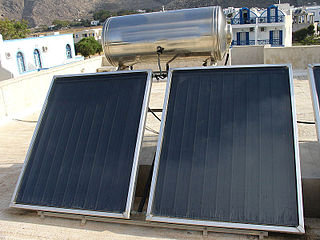
A solar thermal collector collects heat by absorbing sunlight. The term "solar collector" commonly refers to a device for solar hot water heating, but may refer to large power generating installations such as solar parabolic troughs and solar towers or non water heating devices such as solar cooker, solar air heaters.
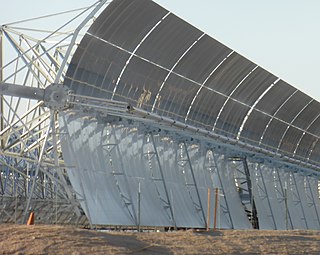
A parabolic trough is a type of solar thermal collector that is straight in one dimension and curved as a parabola in the other two, lined with a polished metal mirror. The sunlight which enters the mirror parallel to its plane of symmetry is focused along the focal line, where objects are positioned that are intended to be heated. In a solar cooker, for example, food is placed at the focal line of a trough, which is cooked when the trough is aimed so the Sun is in its plane of symmetry.
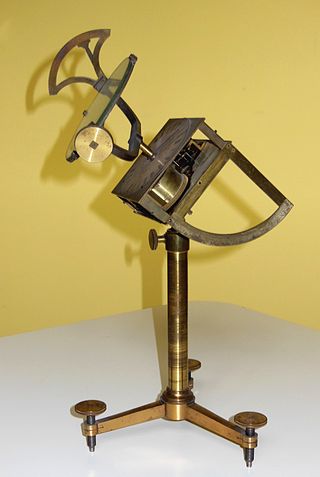
A heliostat is a device that includes a mirror, usually a plane mirror, which turns so as to keep reflecting sunlight toward a predetermined target, compensating for the sun's apparent motions in the sky.

Induction cooking is performed using direct electrical induction heating of cooking vessels, rather than relying on indirect radiation, convection, or thermal conduction. Induction cooking allows high power and very rapid increases in temperature to be achieved: changes in heat settings are instantaneous.

A solar cooker is a device which uses the energy of direct sunlight to heat, cook or pasteurize drink and other food materials. Many solar cookers currently in use are relatively inexpensive, low-tech devices, although some are as powerful or as expensive as traditional stoves, and advanced, large scale solar cookers can cook for hundreds of people. Because they use no fuel and cost nothing to operate, many nonprofit organizations are promoting their use worldwide in order to help reduce fuel costs and air pollution, and to help slow down deforestation and desertification.

Schott AG is a German multinational glass company specializing in the manufacture of glass and glass-ceramics. Headquartered in Mainz, Germany, it is owned by the Carl Zeiss Foundation. The company's founder and namesake, Otto Schott, is credited with the invention of borosilicate glass.

Emeril John Lagassé III is an American celebrity chef, restaurateur, television personality, cookbook author, and National Best Recipe award winner for his "Turkey and Hot Sausage Chili" recipe in 2003. He is a regional James Beard Award winner, known for his mastery of Creole and Cajun cuisine and his self-developed "New New Orleans" style. He is of Portuguese descent on his mother's side, while being of French heritage through his father.

Solar Cookers International (SCI) is a 501(c)(3) nonprofit, non-governmental organization that works to improve human and environmental health by supporting the expansion of effective carbon-free solar cooking in world regions of greatest need. SCI leads through advocacy, research, and strengthening the capacity of the global solar cooking movement. SCI has consultative status with the United Nations Economic and Social Council (ECOSOC) and was founded in 1987.
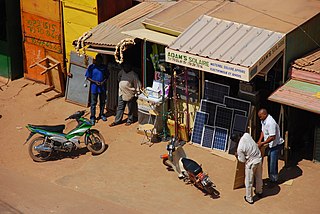
Renewable energy in developing countries is an increasingly used alternative to fossil fuel energy, as these countries scale up their energy supplies and address energy poverty. Renewable energy technology was once seen as unaffordable for developing countries. However, since 2015, investment in non-hydro renewable energy has been higher in developing countries than in developed countries, and comprised 54% of global renewable energy investment in 2019. The International Energy Agency forecasts that renewable energy will provide the majority of energy supply growth through 2030 in Africa and Central and South America, and 42% of supply growth in China.

FULGOR Milano is a registered trademark of Meneghetti S.p.a., an Italian manufacturer of premium major appliances and ceramic glass grills. Fulgor's global headquarters are located in Rosa, Italy; near Bassano Del Grappa in Italy's Veneto Region. The company's products compete with those made by companies Sub-Zero, Bosch, Thermador, Dacor, Miele, Viking Range, or Smeg.
George Oscar Löf was an American engineer and inventor who was best known for his contributions to solar energy research. "Nobody played a more enduring role in the 20th century solar house movement than George Löf."



















